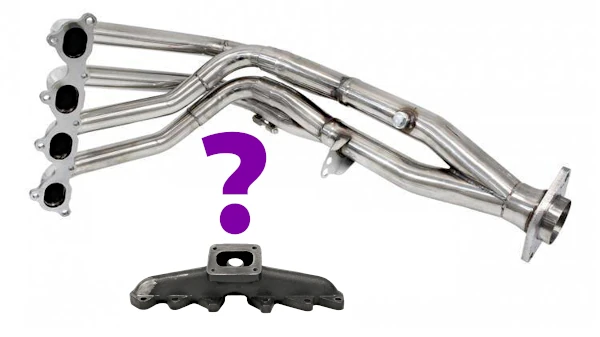Exhaust System Engineering: Unleashing the Power of Turbocharged and Naturally Aspirated Engines
Exhaust systems play a crucial role in the performance and efficiency of automotive engines. Whether you have a turbocharged powerhouse or a naturally aspirated workhorse, the design and function of your exhaust system can make or break your driving experience. In this article, we'll delve into the world of exhaust systems and explore the factors that set them apart for different engine types.
Exhaust Systems for Turbocharged Engines
Turbocharged engines present a unique set of challenges and opportunities for exhaust system design. The turbocharger itself should be strategically positioned as close to the exhaust valves as possible. This arrangement necessitates the use of short exhaust pipes and a compact exhaust manifold. The proximity of the turbocharger to the exhaust valves is critical for harnessing the energy of exhaust gases and maintaining their optimal temperature.
In turbocharged applications, exhaust systems primarily operate under dynamic conditions. This means that factors like pipe diameter and system capacity become paramount. Unlike naturally aspirated engines, where wave dynamics and minimal flow resistance can improve intake charging, turbocharged engines rely on adjusting boost pressure for enhanced performance.
To cater to the unique needs of turbocharged engines, box-type exhaust manifolds or similar designs are often employed. These manifolds consist of short, equally-lengthed pipes, usually housed within a container or "box." Despite their unconventional appearance, these manifolds are highly effective in turbo applications. Some manufacturers offer cast iron exhaust manifolds that follow a box-type design but feature rounded edges and corners for improved aesthetics.
While box-type manifolds are a common choice, custom tubular manifolds can also be crafted for turbocharged engines. However, practical experience shows that well-constructed box-type manifolds are more than sufficient. In some cases, the stock exhaust manifold can also be a viable option. Downstream of the turbocharger, the exhaust system usually consists of a properly-sized pipe, its length determined by the vehicle's dimensions, and a single absorption-type muffler. As the turbocharger acts as a muffler as well, noise levels typically remain within acceptable limits.
When it comes to the diameter of individual pipes downstream of the turbocharger, it's essential to match or exceed the turbine outlet diameter. However, going too large can result in low-end torque loss. Understanding the dynamic principles at play is critical, as the entire turbo exhaust system operates as a specialized variant of a 4-1 (cylinders-pipe)
Exhaust Manifolds for Naturally Aspirated Engines
In contrast to turbocharged engines, naturally aspirated engines rely on exhaust manifolds to enhance their performance across a broad range of engine speeds. The primary aim is to optimize cylinder filling at lower engine speeds while minimizing losses in effectiveness. These enhancements are primarily targeted at multi-cylinder engines since single-cylinder engines benefit from a single pipe with a variable diameter acting as a makeshift exhaust manifold.
The secret of an exhaust manifold's operation lies in its ability to increase flow velocity and intensity within the exhaust pipes. To illustrate, consider a four-cylinder engine with an exhaust system consisting of four individual pipes attached to the cylinder head. To shift the start of dynamic action to lower engine speeds, the ends of the first and fourth cylinder's pipes are connected, as are the second and third cylinders' pipes. This configuration ensures equal intervals between the work of each cylinder in the pair, thanks to the common firing order of 1-3-4-2 in most four-cylinder engines.
By connecting the pipes as described, two exhaust outlets are created instead of four. To each of these outlets, a pipe is attached with the same diameter as the previous pipes but double the total length. Doubling the length maintains the same capacity, preventing the dominance of dynamic action in the shorter pipes over the longer ones.
This shift is due to the increased frequency and intensity of flow in the rear cylinders, followed by a single collector pipe to combine the two outlets.
Conclusion
Exhaust systems are more than mere conduits for exhaust gases; they are engineering marvels that can unlock an engine's full potential. Whether you're dealing with a turbocharged beast or a naturally aspirated workhorse, understanding the specific needs and intricacies of your engine type is vital for optimal performance. Your vehicle's exhaust system is the bridge between raw power and the open road, and it's essential to ensure it's fine-tuned to perfection.
Comparison of Exhaust Systems for Turbo and N/A Engines
| Exhaust Systems for Turbo Engines | Exhaust Systems for N/A Engines | |
|---|---|---|
| Design Complexity | Relatively simple | More complex |
| Operating Principle | Relies on turbocharger for compression | Relies on exhaust gas velocity |
Exhaust Manifolds
| Exhaust Manifolds for Turbo Engines | Exhaust Manifolds for N/A Engines | |
|---|---|---|
| Design | Short and compact | Longer and more complex |
| Purpose | Efficiency, reduced backpressure | Maximize exhaust gas velocity |
Exhaust Pipes
| Exhaust Pipes for Turbo Engines | Exhaust Pipes for N/A Engines | |
|---|---|---|
| Diameter | Larger | Smaller |
| Purpose | Handle increased flow from turbocharger | Efficiently carry exhaust gases |
Mufflers
| Mufflers for Turbo Engines | Mufflers for N/A Engines | |
|---|---|---|
| Size | Smaller, less restrictive | Larger, more restrictive |
| Purpose | Reduce noise from turbo engines | Reduce noise from N/A engines |
